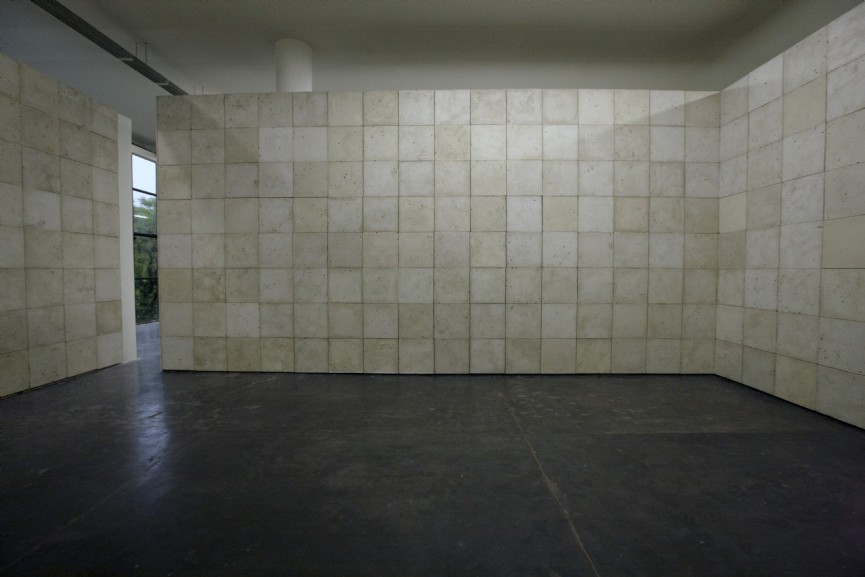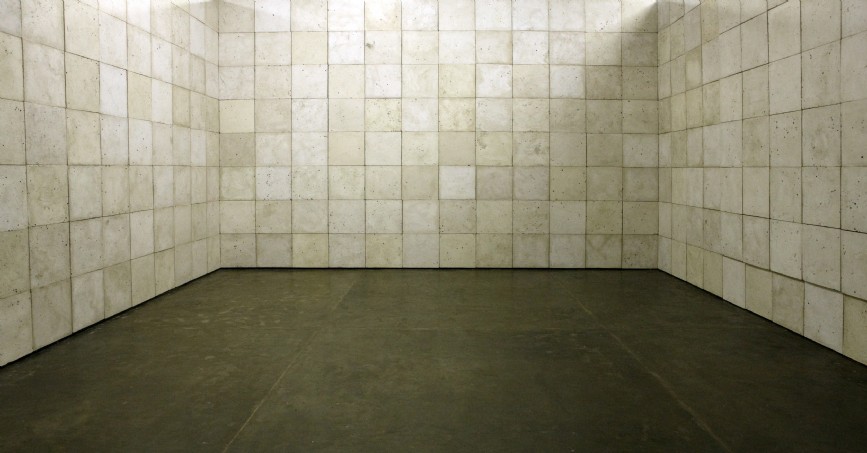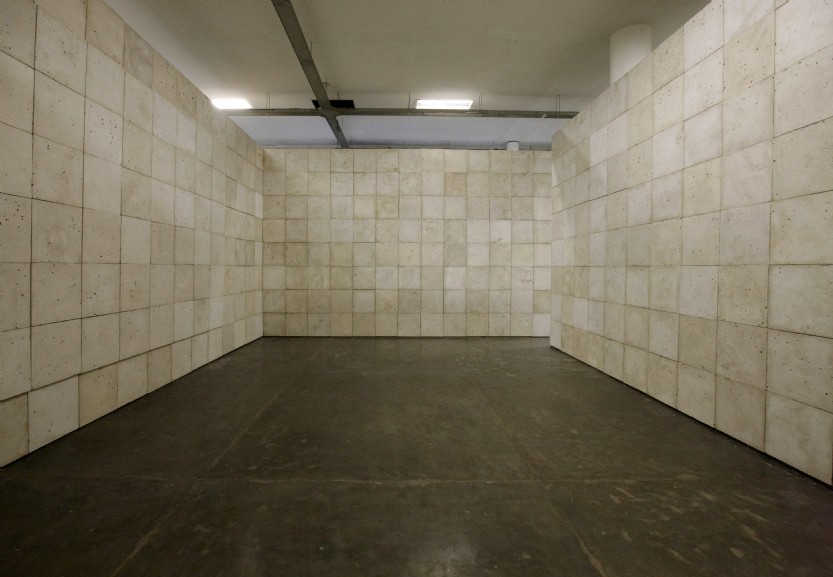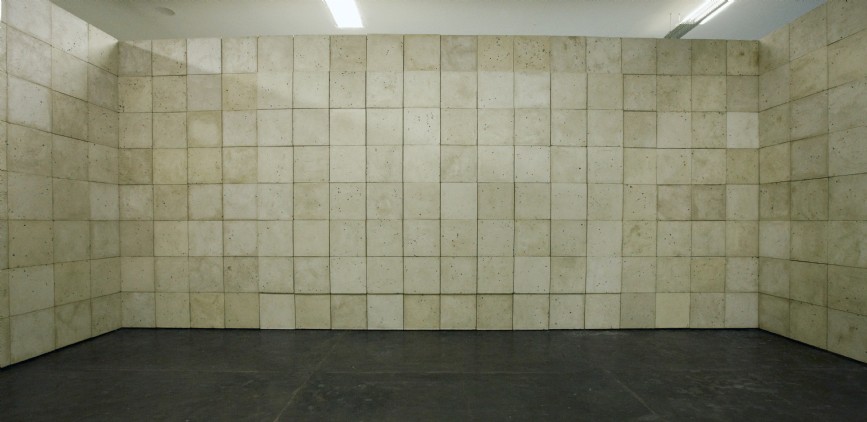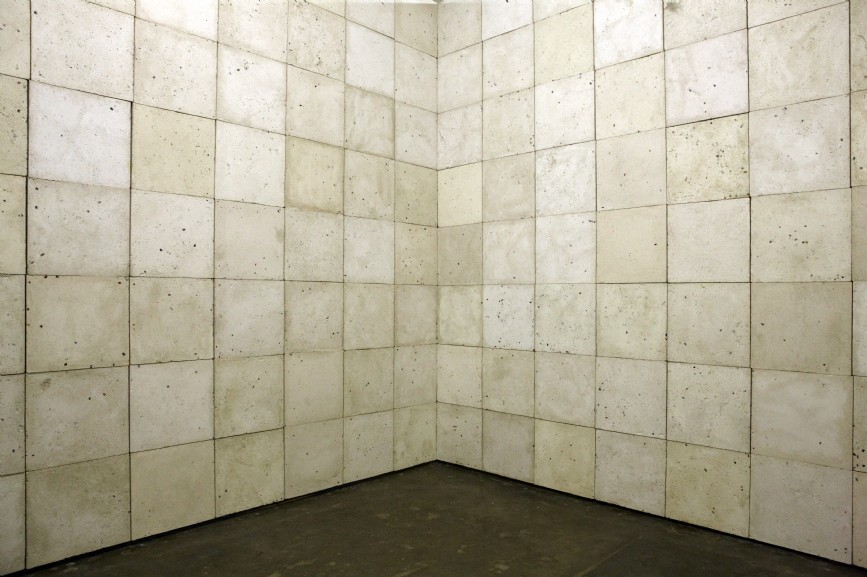The Sun taught me that the history is not so important (2010)
“Closer examination reveals that each plate is distinct from the others, through minimal, almost imperceptible differences. The technical description that accompanies the work informs us that these plates are made from pages taken from art catalogues and books and invitations to exhibitions. In other words, the materials that normally bear witness to artistic events are here recycled and processed. Witnesses on the verge of erasure. Nevertheless, their fleeting traces are strong enough to reveal some craft, testify to a former existence and lend a certain singularity to the surfaces. In addition, one of these walls offers a rectangle in relief; the other three are flat. The relief is achieved by the use of slightly thicker plates — a mere two centimeters thicker. Like the first–mentioned distinction, this too teeters on the brink of imperceptibility. […]
This other work’s title — O sol me ensinou que a história não é tão importante [The sun taught me that history isn’t everything] — acts in quite a puzzling way. Before the viewer comes to the installation, the picture has already whispered some clues and reminiscences. “Be aware of the facts related to my presence” — it seems to say. Coming into the installation startles the viewer. In the inner part, something distinct from what was expected takes place. The public faces a series of rectangles, plates distributed from top to bottom in such a way as to fill out the room. It is a silent event. Just like a wall. Four walls.
In the beginning it seems that the event can be reduced to this disposition. Nevertheless, a closer look allows us to examine other occurrences. In one of the walls, as already mentioned, several plates are in relief, revealing a rectangle — a geometric shape reminiscent of the imaginary of the painting. Realizing this metalinguistic circumstance makes room for reconfiguring the whole set through the same prism. In our imaginations, the walls also act as analogues to the painting. Historically, before drying upon canvases, paintings dried upon walls. Besides that, under the modern condition, painting, formerly a window that opens onto the world, imposes itself upon the viewer’s sight as a barrier.
And, if these walls comment on painting, this extension of white rectangles, flecked with faded dots over the surface, likewise presents itself as such, as a huge painting that encloses the viewer in its core.”
(excerpt from text “In the Presence of Absentees”, by Marco Silveira Mello, published in Daniel Senise: XXIX Bienal de São Paulo, São Paulo, 2010)
https://www.danielsenise.com/en/texto/in-the-presence-of-absentees/
